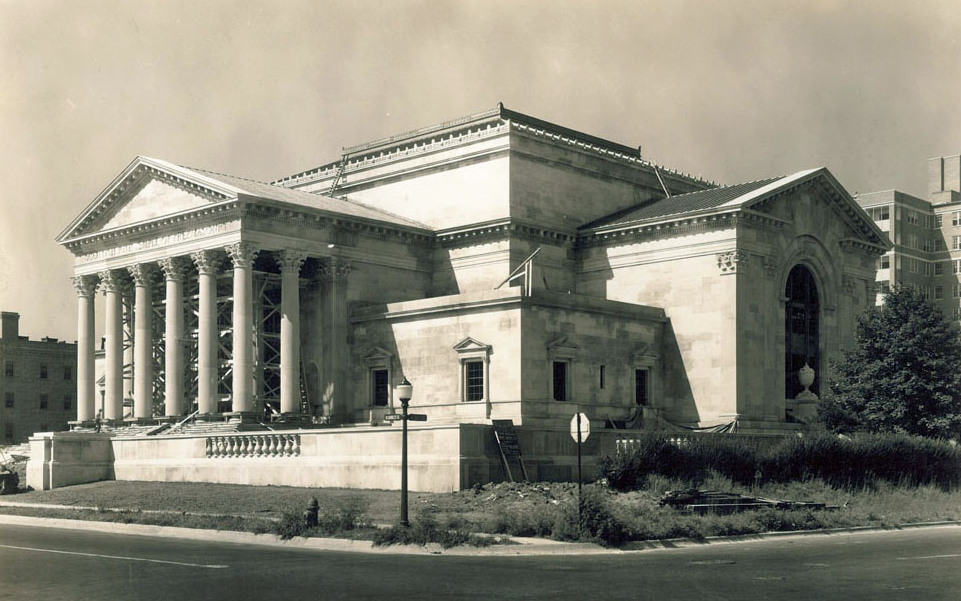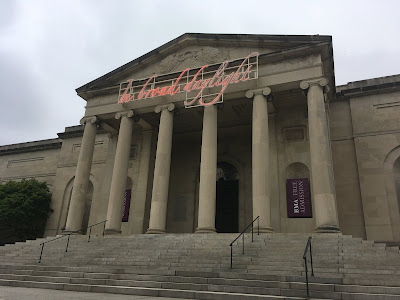Walking Around Homewood - May 2019
Recently, I started a walk around the Homewood Campus to stretch my legs and take a look at some of the buildings and sites that I normally just drive by and don't have the opportunity to stop and get a closer look. I began at the corner of 39th and N. Charles Street and walked south.
Sitting at that intersection is the hard-to-miss Scottish Rite Temple of Freemasonry at 3800 N. Charles Street. From outward appearances the central portico and columns gives the appearance of the Baltimore Museum of Art, and it should remind you of it, since it was designed in part by the same architect and built around the same time. The Masonic Temple was designed by Clyde Fritz and John Russell Pope (It was Pope who also designed the BMA), and built between 1930 and 1932. |
| Scottish Rite Temple - May 2019 |
 |
| Scottish Rite Temple under construction - ca. 1930-1932 |
 |
| Sidney Lanier statue by Hans K. Schuler, 1942 - May 2019 |
The sculpture by Hans K. Schuler, Baltimore's "Monument Maker" was dedicated in 1942, and is interesting because to a casual viewer from a distance it looks like someone sitting on a rock. I know I had to take a second look the first time I went passed this spot. Sometimes referred to as "The Poet of the Confederacy", although most of his literary work was completed after the civil war, this particular piece of public art avoided scrutiny of the other Confederate Monuments that were removed by the city in 2016. This is probably due to the fact that this doesn't depict Lanier as a soldier, doesn't it mention his war-service (or anything for that matter or than his name and yearof birth/death), nor was it commissioned - as far as I know - by a southern veterans group. This is probably similar to John Mifflin Hood - had served as a topographical engineer in the Confederate Army - whose statue in Preston Gardens commemorates his service to the Western Maryland Railroad.
Passing Johns Hopkins University, I turned up Art Museum Drive and stopped in front of the Baltimore Museum of Art. The other building in the neighborhood designed by Johns Russell Pope, construction began in 1927 and the museum opened in 1929. Additions have been made to the building over time, and in 2012 after a lengthy renovation, the original entrance was opened up again.
 |
| Baltimore Museum of Art - May 2019 |
Currently above the portico to the Pope Building is an neon art installation "In Broad Daylight" which debuted in 2018. Continuing down Art Museum Drive, is the pedestal where the Lee-Jackson Monument used to be.
 |
| Empty pedestal where Lee-Jackson Monument stood from 1948-2017 - May 2019 |
 |
| Lee-Jackson Monument prior to being taken down. |
It was about this time that the occupant of the stroller I was pushing began to get a little fussy, so I had to quit taking pictures and move toward home for nap time.
For Your Consideration:
Scottish Rite Temple - Baltimore HeritageSidney Lanier - Baltimore Literary Heritage Project
Baltimore Museum of Art
Lee-Jackson Monument - Special Commission to Review Baltimore's Public Confederate Monuments


Comments
Post a Comment